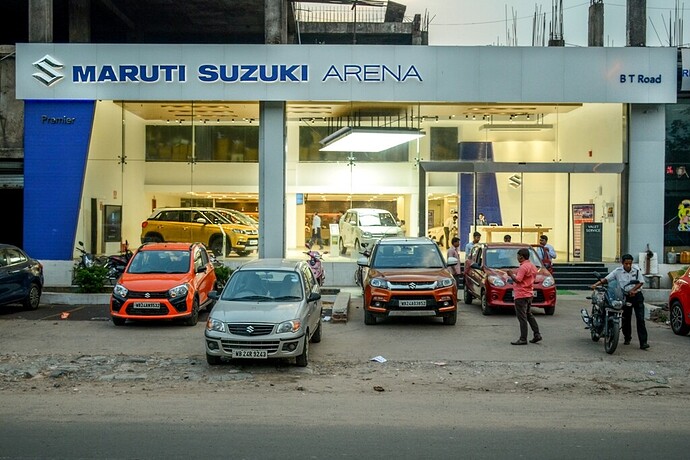Maruti Suzuki -
FY 25 Q2 results and concall highlights -
Sales - 35589 vs 35535 cr, up 0.2 pc
EBITDA - 3665 vs 3990 cr, down 8 pc
PAT - 3069 vs 3716 cr, down 17 pc ( sharp fall in PAT is due to changes made in the Income Tax rates in the latest union budget and its impact causing additional tax liability for the company to the tune of 837 cr )
Sales volumes @ 5.41 lakh vs 5.52 lakh vehicles ( down 2 pc )
Domestic sales @ 4.63 lakh vehicles, down 4 pc
Export sales @ 0.77 lakh vehicles, up 12 pc
Segment wise sales -
Mini + Compact - 2.08 lakh vehicles, down 13 pc
Mid Size Sedans - 1.97 k vehicles, down 46 pc
UVs - 1.80 lakh vehicles, flat YoY
Vans - 34 k vehicles, flat YoY
LCVs - 8.4 k vehicles, up 14 pc
Sales to Toyota India - 29.8 k vehicles, up 83 pc
Company’s sales network now stands at 3950 outlets ( Nexa + Arena + Commercial outlets ). Nexa outlets now stand at 500
Aprox 33 pc of company sales continue to come from CNG models. Company offers CNG variants across 14 of its models
Have commenced exports of Fronx SUV from India to Japan
Company’s retail sales for the festive season are up 14 pc @ 2.97 lakh vs 2.60 lakh vehicles - a key positive. April - Oct retail sales for the company should be up by 4 pc YoY. Also, the company expects to end oct with a lean inventory of only 30 days
Because of lean inventory situation, year end discounting pressure should be low
For full FY 25 too, company estimates their growth in volumes to be around 4 pc
Rural mkts are doing better than Urban mkts for the company
A lot of states like Punjab, Haryana, Chandigarh, UP, Chattisgarh have now started giving rebates on registration of Hybrid cars. Company expects more states to join the bandwagon going fwd
Company’s upcoming EV will be a completely new platform ( exclusively for the EV ) with a 60 KWH battery. Company aims to launch it with high end specs and high range so as to kill the range anxiety of the customers and drive the EV penetration in India. Company also intends to export this EV worldwide. Company will unveil all specs in the next few weeks
At present - company sells 18 car models. In medium term, company aims to have 28 models in the market. Aprox 6 out of them are likely to be EV models
Company is paying 3.4 pc of sales as royalty to Suzuki Ltd ( Japan )
Disc: holding, biased, not SEBI registered, not a buy/sell recommendation

